
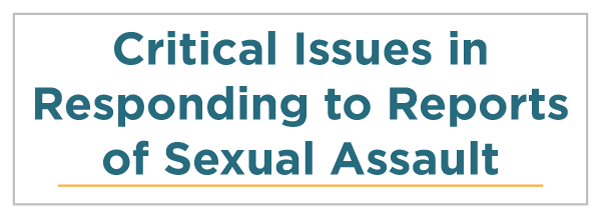 |
 |
 |
 |
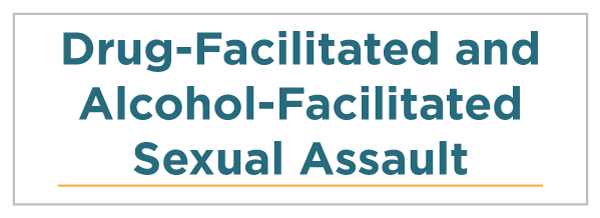 |
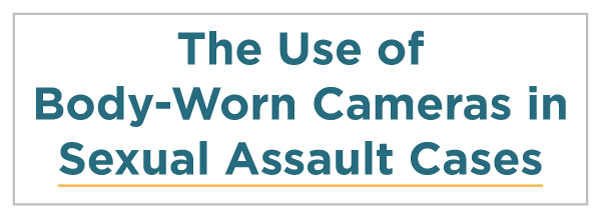 |
 |
 |
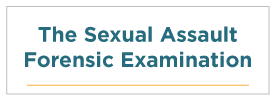 |
 |
 |
 |
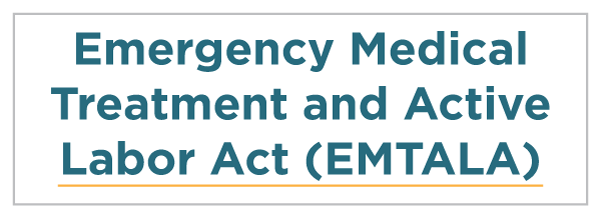 |
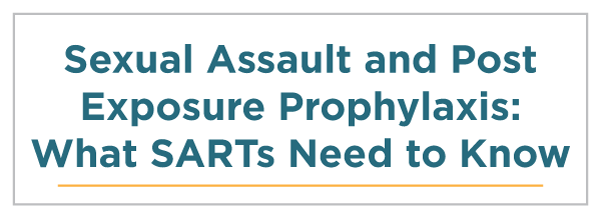 |
 |
Law enforcement’s response to victims of sexual assault has a tremendous impact on their recovery and long-term wellbeing. Law enforcement response also plays a critical role in the community’s response and work toward prevention. Officers and investigators who use trauma-informed practices during interactions with victims will validate and assist in their recovery, as well as increase the potential for positive case outcomes. [6]
The International Association of Chiefs of Police Sexual Assault Incident Report points out that the treatment the victim receives by law enforcement may affect their decision to continue with a case. [7] These initiatives are driven by law enforcement, SARTs, advocates, victims, communities, and researchers. They may be useful to SARTs seeking to improve sexual assault investigations.
This section of the SART Toolkit provides an overview of investigative considerations and does not provide a detailed manual or protocol on how to conduct or investigate sexual assault cases.
The first responder’s actions at the scene of a sexual assault report are critical first steps in the investigation. The first responder first assesses the medical needs of the victim and, if possible, obtains a brief statement of what occurred. They encourage the victim to obtain a medical forensic examination at a hospital or clinic (if within the set timeframe), interview any witnesses, and collect any evidence.
If a suspect is at the scene or is known, the first responder should obtain all available information and determine if probable cause supports an immediate arrest or a warrant for a suspect sexual assault forensic exam.
The first responder’s initial response to the scene or the victim during their report sets the investigative tone for the victim and affects their willingness to further participate in the investigative process and possible prosecution. Often, using a trauma-informed approach, showing empathy, and believing a victim prevents secondary trauma.
{“preview_thumbnail”:”/sites/default/files/styles/video_embed_wysiwyg_preview/public/video_thumbnails/249563867.jpg?itok=uB40maLm”,”video_url”:”https://vimeo.com/249563867″,”settings”:{“responsive”:1,”width”:”854″,”height”:”480″,”autoplay”:0},”settings_summary”:[“Embedded Video (Responsive).”]}
Expert Interview – Is there one moment in a sexual assault that investigators should watch for? – James Hopper by End Violence Against Women, 2018. Retrieved from LINK Provided with permission.
Law enforcement investigative response to sexual assault varies by jurisdiction. Smaller agencies may vest the investigative follow-up responsibilities with the officer who responded to the original scene; medium-sized agencies may take a generalist approach and have an investigative unit for all crimes against persons; larger agencies may have a specialized unit or division that is specifically assigned to investigate the crime of sexual assault.
SARTs can cross-train on this process in their jurisdictions so members are aware of the jurisdiction-specific process. SARTs that cover more than one jurisdiction may work toward developing a standardized response across jurisdictions, particularly in rural or remote areas.
Regardless of the investigative structure of the law enforcement agency, follow-up investigative efforts include but are not limited to —
These steps can assist in the identification of the suspect and potentially support a successful prosecution.
It should be noted that of all the follow-up strategies available, using a trauma-informed interview of the victim is one of the most critical tools to locate additional evidence, particularly in cases of sexual assault.
The value of using a trauma-informed victim interview approach stemmed from research and examinations of law enforcement responses to investigations of sexual assault. The recent studies of sexual assault kit backlogs unlocked information on the way law enforcement investigations were conducted in sexual assault cases. Those studies demonstrated that implicit bias and rape myths contributed significantly to the quality of the investigation, where a victim characteristic or characteristic of the crime determined the likelihood of that case receiving recommended investigative steps leading to a referral to prosecution. [8]
{“preview_thumbnail”:”/sites/default/files/styles/video_embed_wysiwyg_preview/public/video_thumbnails/249568547.jpg?itok=5eCg2FRk”,”video_url”:”https://vimeo.com/249568547″,”settings”:{“responsive”:1,”width”:”854″,”height”:”480″,”autoplay”:0},”settings_summary”:[“Embedded Video (Responsive).”]}
Expert Interview – Are there suggestions on how to interact with victims in a way that helps them feel supported? – James Hopper by End Violence Against Women International, 2018. Retrieved from LINK Provided with permission.
The Office for Victims of Crime defines a forensic interview as “a non-leading, victim sensitive, neutral, and developmentally appropriate investigative interview that helps law enforcement determine whether a crime occurred and what happened.” The goals of a trauma-informed interview are to reduce trauma to the victim while maximizing the information received from the interview. [9]
A trauma-informed interview uses an understanding of the neurobiology of trauma to gain information. Trauma-informed interviews are “delivered with an understanding of the vulnerabilities and experiences of trauma survivors, including the prevalence and physical, social, and emotional impact of trauma.” This approach also includes an awareness of trauma showing up in others, such as staff members, and incorporates an understanding of trauma in policies and procedures.
In a trauma-informed approach, the survivor’s safety, choice, and control are prioritized. [10] Trauma-informed interviews recognize disclosure is a process and traumatic memories are stored in the brain differently. For more information, read the Introduction to the Science of Stress, Trauma, and Memory section of the SART Toolkit.
A forensic interview delivered in a trauma-informed way increases law enforcement’s ability to gather evidence. The International Association of Chiefs of Police notes, “The interview is a way to allow the victim to express what their experience was rather than just what they remember or do not remember. Capturing the trauma and the sensory and peripheral details of the event is compelling evidence.” [11]
Victims of sexual assault can often feel re-traumatized as they relive their sexual assault during their interview with investigators. This is often characterized as secondary victimization. While that is not the intent of the investigator, awareness and recognition of this issue by the investigator can lead to a more compassionate and informative interview with the victim feeling safe, listened to, and supported. For more information on what trauma-informed is and is not, see the Trauma-Informed Response section of the SART Toolkit.
{“preview_thumbnail”:”/sites/default/files/styles/video_embed_wysiwyg_preview/public/video_thumbnails/261564015.jpg?itok=WWBhBj_K”,”video_url”:”https://vimeo.com/261564015″,”settings”:{“responsive”:1,”width”:”854″,”height”:”480″,”autoplay”:0},”settings_summary”:[“Embedded Video (Responsive).”]}
Expert Interview – Trauma Informed Interviews – Russell Strand by End Violence Against Women International, 2018. Retrieved from LINK Provided with permission.
A trauma-informed interview is not —
Rather, a trauma-informed interview generally contains the following investigator strategies:
In 2011, an investigation by the United States Department of Justice Civil Rights Division into the sexual assault investigative practices of the New Orleans Police Department found that officers frequently made negative judgments early on in a sexual assault case based on the victim’s behavior and characteristics and the characteristics of the crime. These early judgments often led to cursory investigations or no investigations at all. [12]
Examples of inaccurate stereotypical assumptions and negative judgments — [13]
As early as 2001, research studies found that specialized sexual assault training for law enforcement officers has resulted in positive outcomes. [14] In the wake of the sexual assault kit backlogs and the various studies and examinations of law enforcement’s investigative responses to sexual assault, training and education of officers and investigators has been on the rise.
From webinars sponsored by national research organizations, to training conferences dedicated solely to sexual assault investigations and responses, to websites devoted to training and guidance on working with sexual assault victims, the increase in available information has helped improve law enforcement’s response to sexual assault incidents and sexual assault victims.
Many organizations and providers conduct training on trauma-informed interview techniques. SARTs or law enforcement agencies seeking training should identify which provider is a good fit for their community, including costs, follow-up opportunities, ongoing technical assistance related to implementation, and other local needs. Contacting a national SART technical assistance (TA) provider or SART email group for referrals is the best way to identify the training or trainer that is right for your needs.
SART policy should reflect the expectation that all reported sexual assaults will be thoroughly investigated — including interviews of victims, other available witnesses, and suspects — and collection of physical evidence in addition to that collected during the medical forensic examination.
Most SART policies outline the role and investigative steps associated with sexual assault investigations in a particular jurisdiction. All SART members should participate in identifying what gaps exist and why. Gaps may exist due to turnover, logistics, lack of resources, lack of education, persistent myths about sexual assault or victims, outdated or unclear statutes, and access to services. SARTs may be crucial to identifying gaps as there is constant external review and feedback from collaborative partners.
Building Cultures of Care (PDF, 60 pages)
This document by the National Sexual Assault Coalition Resource Sharing Project and National Sexual Violence Resource Center (NSVRC) provides information on trauma-informed care and a guide on how to integrate trauma-informed service delivery into a program. While written for sexual assault programs, all members of a SART can adapt and apply the information to their program.
Concept of Trauma and Guidance for a Trauma-Informed Approach (PDF, 27 pages)
This document written by the Substance Abuse and Mental Health Services Administration (SAMHSA) provides a framework for developing a trauma-informed approach.
Help is Here: A Guide for Survivors of Sexual Assault (PDF, 25 pages)
This guide created by the New Orleans SART provides survivors with contact information, resources, and an idea of what to expect after an assault and how they may interact with various systems.
The National Center for Trauma-Informed Care and Alternatives to Seclusion and Restraint (NCTIC)
This resource promotes trauma-informed practices in the delivery of services to people who have experienced violence and trauma and are seeking support for recovery and healing.
Trauma-Informed Approaches: Federal Activities and Initiatives (PDF, 75 pages)
This report by the Federal Partners Committee on Women and Trauma reviews current practices of a wide range of federal agencies related to trauma-informed approaches to service provision.
| Back | Index | Next |
